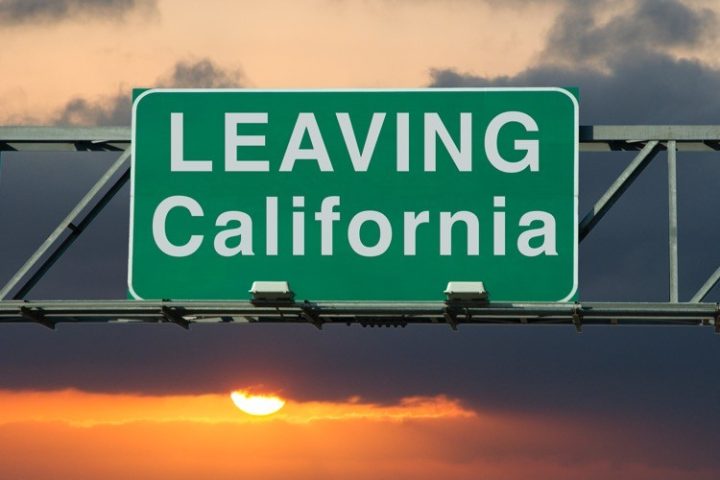
Editors at Issues & Insights, an unashamedly pro-free market research firm, wrote on Monday that it’s common knowledge that people “leave areas known for authoritarian tyranny, stagnation, stultification, crime, and excessive regulation in order to find the opposite somewhere else: economic freedom, dynamism, social diversity, and good [read: limited] government.”
I & I’s editorial board reviewed the latest data from U-Haul, the Census Bureau, and economist Mark Perry’s work at the American Enterprise Institute (AEI) and concluded that “the mass exodus of more than a million Americans moving largely from Blue States to Red States expresses [their] dissatisfaction with high taxes, rampant crime, lockdowns, vaccine mandates, excessive state government regulations, a politically stifling ‘woke’ culture, and the lack of economic opportunity and freedom.”
Readers are increasingly familiar with the U-Haul Growth Index, which revealed last week that Texas overtook Florida in the largest net gain of one-way U-Haul trucks for the year 2021. Tennessee ranked third, South Carolina ranked fourth, and Arizona rounded out the top five.
On the other hand, the demand for U-Haul trucks leaving California was so great that many of the franchisees ran out of equipment. That kept the former “Golden State” at the bottom of the U-Haul Growth Index, with Illinois not far behind in 49th position.
U-Haul’s vice president for the Dallas Fort-Worth area, Matt Merrill, reported:
We see a lot of growth coming from the East and West Coast. A lot of people moving here from California [and] New York. We also see a lot of people coming in from the Chicago markets.
I think that’s a lot due to the job growth — a lot of opportunity here. The cost of living here is much lower than those areas. Texas is open for business.
While U-Haul measures equipment flow, the Census Bureau counts people flow. Last year Texas, Florida, Arizona, North Carolina, and Georgia enjoyed astonishing numeric growth of nearly 800,000, while New York, California, Illinois, Massachusetts, and Louisiana shrank by a similar amount.
Statistical economist Mark Perry, however, drilled down into the question of “why?” Why did they leave? What did they find when they got there?
Perry examined which political party controlled the states most- and least-favored. He reviewed the business climate in each state. He looked at individual and corporate income-tax burdens, each state’s fiscal health, energy and housing costs, the economic performance and outlook, and the labor market.
He noted the importance of “right-to-work” laws versus forced-unionism laws and found that “all ten of the top inbound states in 2021 are Right-to-Work states, while eight of the top ten outbound states are forced-unionism states.”
He looked at which political party controlled the states and learned that Republicans control the legislatures in nine of the top 10 “inbound” states and eight of them have Republican governors. But for the “outbound” states, he learned that Democrats control the legislatures in seven out of the top 10 “outbound” states and eight out of 10 of those states had Democrat governors.
Therefore, concluded Perry:
Just based on political party control at the state level, millions of Americans are moving away from blue-controlled states to red states.
He looked at each state’s tax burden and discovered a similar disparity: The average tax burden for the top ten inbound states was 7.7 percent, while the average for outbound states was 9.9 percent.
When looking specifically at income-tax rates, he found that the average top individual income-tax rate in the top 10 inbound states was 3.8 percent, compared to a top tax rate among the top 10 outbound states to be more than double, at 8 percent. He noted that four of the top 10 inbound states — Florida, Texas, Tennessee, and Nevada — have no state income tax at all.
On the other hand, California sports the nation’s highest top marginal tax rate at 13.3 percent, with Hawaii and New Jersey not far behind, at 11 percent and 10.75 percent, respectively.
He looked at Forbes magazine’s rating of the best states for doing business and learned that its average ranking for the top 10 inbound states was eight out of 50, whereas its average ranking for the top 10 outbound states was 33 out of 50.
When considering each state’s economic performance and outlook, Perry saw the same thing: The average ranking among the top 10 inbound states — on a scale of one (best) to 50 (worst) — was a 10, while for the top 10 outbound states, it was a 39.
Perry concluded:
There is empirical evidence that Americans and businesses “vote with their feet” when they relocate from one state to another, and the evidence suggests that Americans are moving from blue states that are more economically stagnant, fiscally unhealthy states with higher tax burdens and unfriendly business climates with higher energy and housing costs and fewer economic and job opportunities, to fiscally sound red states that are more economically vibrant, dynamic and business-friendly, with lower tax and regulatory burdens, lower energy, and housing costs and more economic and job opportunities.
There are significant political implications for the mass migration away from blue states to red states as well. It “portends major shifts in America’s voting clout,” wrote I&I’s editorial board. “Red States will get redder while Blue States get bluer.” It expanded:
Because of the Red States’ population growth, their relative clout in future elections should be bigger. They’ll have more seats in the House of Representatives and, assuming it’s a trend across most states, it might turn Congress slightly more to the right of the political spectrum.
Related article:



